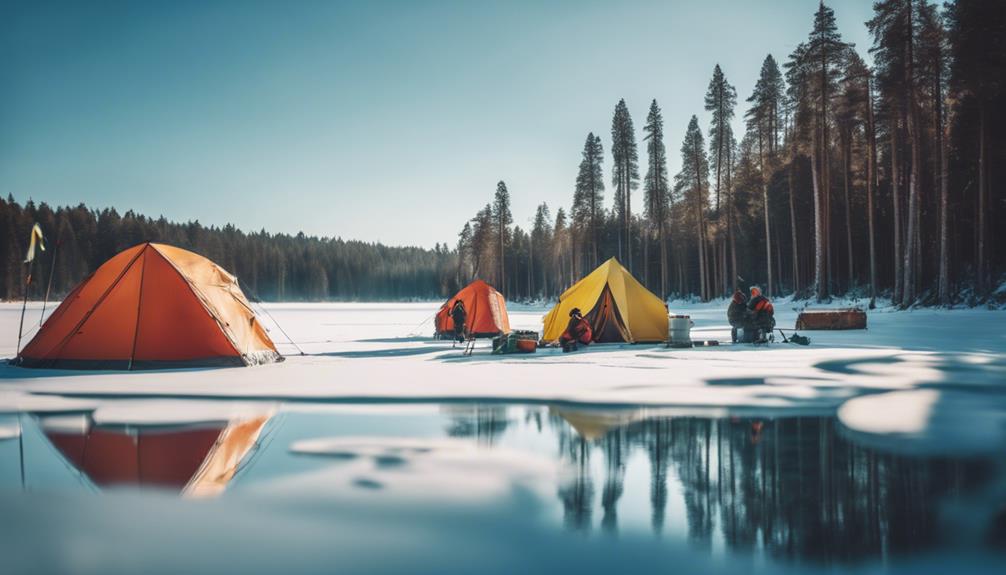Fishing is not only a popular recreational activity but also a way to connect with nature and unwind from the hustle and bustle of everyday life. However, before you cast your line, it’s essential to understand the regulations that govern fishing practices, including whether you need a fishing license for catch and release. In this blog post, we will explore the ins and outs of fishing licenses, particularly in the context of catch and release fishing, to help you navigate the regulations effectively.
Understanding Fishing Licenses: An Overview
When it comes to fishing, a fishing license is typically required by law in many regions. This legal requirement is designed to regulate fish populations, protect aquatic ecosystems, and ensure sustainable fishing practices. A fishing license grants you the right to fish in designated waters and contributes to conservation efforts. Different states and countries have varying rules regarding fishing licenses, so it is crucial to familiarize yourself with local regulations before heading out on the water.
The Importance of Catch and Release Fishing
Catch and release fishing is a popular practice among anglers who wish to enjoy the thrill of fishing while minimizing their impact on fish populations. This method involves catching fish and then releasing them back into the water unharmed. Catch and release fishing helps maintain healthy fish populations and promotes biodiversity in aquatic ecosystems. However, even if you plan to practice catch and release, you may still need a fishing license, depending on where you fish.
Do You Need a Fishing License for Catch and Release?
The short answer is yes; in most cases, you will still need a fishing license for catch and release fishing. Even when the intent is to return the fish to the water, regulations often mandate that all anglers possess a valid fishing license. This requirement ensures that the authorities can monitor fishing activities and enforce conservation measures. Always check local regulations to confirm whether a license is mandatory for your specific area and fishing activities.
State-Specific Regulations for Catch and Release Fishing
Fishing regulations can vary significantly from one state or region to another. Some states may have specific rules regarding catch and release fishing, including designated catch and release areas, restrictions on species, and specific times of the year when catch and release is allowed. For instance, some areas may require anglers to release certain species during spawning seasons to protect their populations. To avoid fines and protect the environment, always refer to your state’s fish and wildlife agency for up-to-date regulations.
Benefits of Having a Fishing License
Having a fishing license not only keeps you compliant with local laws but also has several benefits. First, it contributes to the funding of conservation programs that protect aquatic habitats and fish populations. Additionally, licensed anglers often receive access to exclusive fishing spots or events, discounts on fishing gear, and other perks. Ultimately, buying a fishing license is an investment in sustainable fishing practices that benefit everyone who enjoys the sport.
Common Misconceptions About Fishing Licenses
Many misconceptions surrounding fishing licenses and catch and release practices can lead to confusion. One common myth is that if you are not keeping the fish, you do not need a license. This is incorrect; regardless of whether you plan to keep the fish or release it, a license is usually necessary. Additionally, some anglers believe that fishing in private ponds or lakes does not require a license, but this can vary based on local laws. It’s essential to dispel these myths and understand the legalities involved in fishing.
Best Practices for Catch and Release Fishing
If you choose to practice catch and release fishing, it’s vital to do so responsibly. Here are some best practices to ensure the well-being of the fish: use barbless hooks to minimize injury, handle the fish with wet hands to protect their slime coating, and avoid keeping them out of the water for extended periods. Additionally, use appropriate gear to avoid overexerting the fish during the fight. By following these guidelines, you can help ensure that the fish you catch have the best chance of survival after being released.
Conclusion: Stay Informed and Compliant
In summary, you will generally need a fishing license for catch and release fishing, and it’s essential to comply with local regulations to protect fish populations and aquatic ecosystems. Always check the specific rules in your area to ensure that your fishing practices are legal and sustainable. By understanding the importance of fishing licenses and adhering to best practices for catch and release, you can contribute to the conservation of our precious aquatic resources and enjoy a fulfilling fishing experience. Happy fishing!
